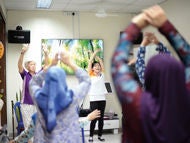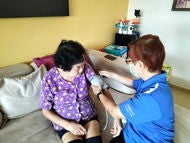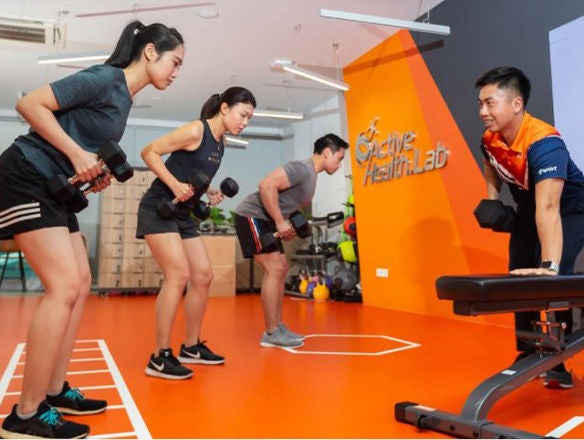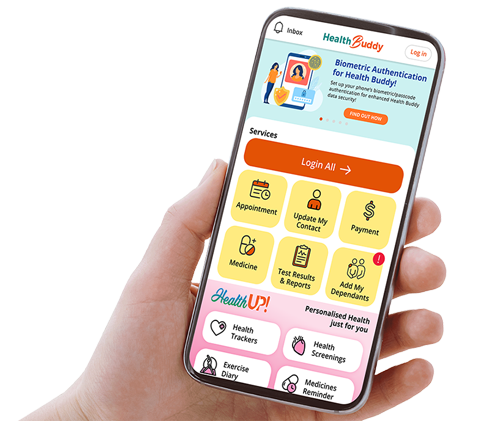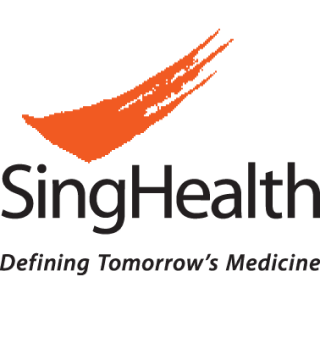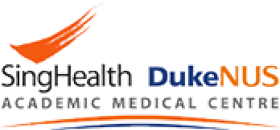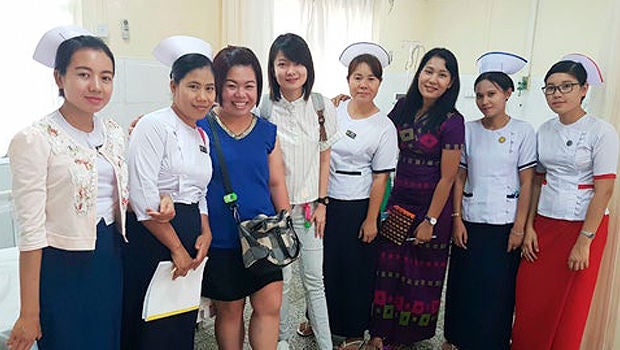
By Corinne Kerk, Singapore Health

STARTING YOUNG
Her first trip as a teenage volunteer to Yunnan, China, whetted her appetite for more volunteer work.
Since young, Senior Staff Nurse Adele Woon, National Cancer Centre Singapore (NCCS), had always been interested in volunteering, and frequently took part in her school’s outreach programmes. So, naturally, when her junior college was raising funds to build a road for a village in Yunnan, she happily joined in.
“The new road helped connect the remote village to the main roads, so farmers could sell their produce further away and children could easily walk to school,” she said. While there, the students also taught the villagers some English and personal hygiene.
The trip was an eye-opener and the forerunner of others that followed. Five years later, she returned to Yunnan as part of an outreach programme by nursing students from the National University of Singapore (NUS). There, she taught the locals about sexually transmitted diseases, basic hygiene and dental care.
Since then, the 28-year-old has been on five overseas mission trips. Her latest was to Khek Noi, Thailand, with Project Light, organised by the NUS nursing alumni to promote the spirit of volunteerism.
Led by a fellow NCCS nurse, the team of one doctor and seven nurses linked up with a local non-governmental organisation to do medical humanitarian work in rural Thailand.

There, they visited less mobile elderly villagers at home and conducted basic medical examinations. They also set up a mobile clinic, where they attended to about 100 patients in two days, and taught villagers cardiopulmonary resuscitation and first aid.
On her days off, Adele volunteers at a non-profit organisation, which attends to the medical needs of foreign migrant workers. She is also a befriender with a children’s cancer organisation.
“Missions have helped broaden my horizon. By understanding different people and different cultures, you can learn how to become a better person and a better nurse,” she said.
# # # # #

SMALL ACTIONS, BIG IMPACT
Kampong Chhnang in Cambodia holds a special place in the heart of Nurse Clinician Rajammal P K.
The 49-year-old has visited the province five times to share best practices of neonatal resuscitation and paediatric cardiopulmonary resuscitation with health-care teams there. “It’s very rewarding to know that the Cambodian team was able to save more lives using skills we taught them,” said Rajammal, who works in the Neonatal Intensive Care Unit at KK Women’s and Children’s Hospital (KKH).
She sees these trips as a great opportunity to share KKH’s evidence based nursing practices, despite the challenges of language barriers and working with limited resources.

With support from family and colleagues, she also donates food, clothing, toys and books to orphans in Cambodia and India.
“I hope to do more to help. These missions have helped me be a more empathetic person and better understand the struggles that developing countries face,” said Rajammal.
Locally, she uses her nursing skills as a volunteer at nursing homes and to help stroke survivors at the non-profit Stroke Support Station.

# # # # #
EVERY TRIP A FULFILLING ONE
Medical missions inevitably mean making personal sacrifices. But this has not deterred Senior Staff Nurse Siti Raudah Matinee, 34, and Nurse Clinician Poon Lai Kuan, 39, both from Singapore General Hospital’s (SGH ) Major Operating Theatre department.
“Being able to help those in need makes everything worthwhile,” said Lai Kuan, who has been on the hospital’s medical missions to Vietnam, Myanmar, Bangladesh, Indonesia and China since 2004.
In 2014, they went to Dhaka, Bangladesh, where they worked with SGH surgeons to treat patients who needed plastic and burns surgery at the Combined Military Hospital. It involved getting the operating theatre ready and assisting the plastic surgeons during surgery. The team also conducted training on infection prevention and sterilisation in the operating theatre.

Since then, both nurses have been on three trips to Dhaka.
Their most recent in November 2017 was part of a Memorandum of Understanding between the Bangladesh Ministry of Health and Family Welfare and SingHealth to develop capabilities in burns treatment.
Supported by Temasek Foundation International, the aim was to train 300 specialists and 10 hospital leaders in reconstructive surgery, and surgical wound management of massive burns and rehabilitation.
Siti is always awestruck on these trips by the high spirits of the local nurses. “Their enthusiasm and hunger to learn leaves a lasting impression, and has inspired me to do even better as a nurse.”
Both agree that mission trips make them appreciate life more. “They teach us to be humble and more sensitive. Nothing in life comes easy, but lending a helping hand puts a smile on your face and on those of others,” said Lai Kuan.
# # # # #
ADAPTING ON THE SPOT
When advanced practice nurse Tan Il Fan, 37, and Nurse Clinician Fu Liqing, 34, from National Neuroscience Institute were asked by Dr Umapathi Thirugnanam, Senior Consultant, Department of Neurology, to join an overseas medical mission to Myanmar, they saw it as a great opportunity to help.
The trip, their first, was to Yangon General Hospital to train nurses there in stroke care.

Since then, they have joined medical missions to Laos and Vietnam to conduct training in stroke care, including hyper-acute stroke management. This included nursing care in an acute stroke unit, post-stroke rehabilitation, neurological nursing assessment tools, and caregiver training and education.
Often on these trips, lesson plans have to be quickly adapted to match resources and practices at each hospital. “We improvise on the spot and come up with new ways of teaching,” said Il Fan.
For example, some hospitals are unable to provide nutritional milk feeds to patients who need nasogastric tube feeding. In place of milk feeds, nurses there would blend porridge and meat for their patients.
Once, they saw a caregiver trying to put blended food into a patient’s tube when the tube was already dislodged from the stomach. They immediately stopped the caregiver, alerted the nurse-in-charge, and went on to include nasogastric tube feeding as part of the teaching session.
“It was not in our lesson plan but we worked with the nurses on how best to include it. In less than half a day, we managed to reschedule our timetable and squeeze in a timeslot to teach the nurses how to educate caregivers on tube placement,” said Liqing. The team later brainstormed and came up with a simplified version of tube placement and patient-safety teaching materials.

“We learn to appreciate different nursing practices from different cultures. We come from different hospitals but we share the common goal of providing our patients with the best care,” said Liqing.
Contributed by

